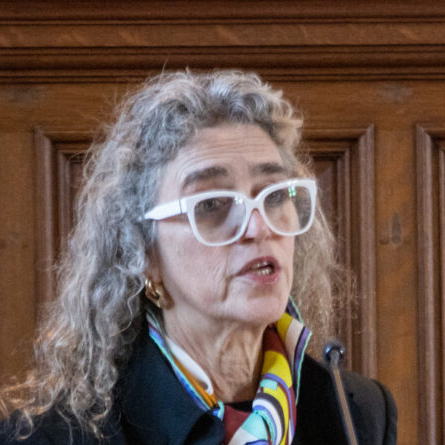Laura Levitt is Professor of Religion, Jewish Studies, and Gender at Temple University. She is the author of The Objects that Remain (2020); American Jewish Loss after the Holocaust (2007); and Jews and Feminism: The Ambivalent Search for Home (1997) and a co-editor of Impossible Images: Contemporary Art After the Holocaust (2003) and Judaism Since Gender (1997). She is currently writing about the offerings left at The Tree of Life Synagogue and at George Floyd Square while working on a book about the former East German writer Christa Wolf. https://lauralevitt.org/
In her memoir, The Red Parts, Maggie Nelson writes about the over-thirty-year-old unsolved murder of her aunt, Jane Mixer, a case brought back to life in a Michigan court room.1 Who gets to tell this story? How should it be told? A single image: an autopsy photograph held in the poet’s words captured on a long yellow legal pad.
- 1 Maggie Nelson, The Red Parts: A Memoir (New York: Free Press, 2007).
Photo #4
Jane Mixer’s body on a gurney: “A head-on shot, from the sternum upwards, a red ruler under her chin as if for scale.”1 The poet shows us what she wants us to see, a resemblance, “her nostrils look just like my mother’s—the same two, slim water-melon seeds. This could have been my mother’s fate, as she feared for years it might be. It could be anybody’s.”2
Nelson calls attention to the vivid blue above her aunt’s eyes, the color tells us the sequence of events.1 Jane was shot and only then was she strangled.
If she had died of asphyxiation, her whole face would have a bluish color, a color the examiner terms “unmistakable.” But the only blue here is the blue blood above her eyes. If she had been strangled first, the stocking would have acted as a tourniquet, and this blood would not have been able to move up to her face. The examiner explains that the force of the bullets fired into Jane’s skull fractured her orbital bones—the bony cavities that contain our eyes—and the blue is all the blood that rushed around the injury.2
The blood rushes to the scene of the injury. The blood does its duty. This photograph “may be the worst of them all” pointing to the futility of the body’s own reactions. “It shows that the body hurries to heal itself, even as it’s dying.”3
Later Nelson will write that she did not want to see the episode of 48 Hours Mystery devoted to her aunt’s case, in part because “I don’t want to see the crime scene photos flashed over and over again on TV, nor do I want to think about millions of Americans flipping by Jane’s corpse under its bloodstained raincoat while channel-surfing.”1 Rather, in succinct prose, in six numbered passages, one for each photograph, the poet directs our gaze. This photograph cannot speak for itself, Nelson bears witness. Her words show us what she wants us to see: the magnitude of the crime, the sanctity of this body.
- 1 Ibid., 70-71.
Notes
Keywords
Imprint
10.22332/mav.obj.2022.24
1. Laura S. Levitt, "A Photograph in Words," Object Narrative, MAVCOR Journal 6, no. 3 (2022), doi: 10.22332/mav.obj.2022.24.
Levitt, Laura S. "A Photograph in Words." Object Narrative. MAVCOR Journal 6, no. 3 (2022), doi: 10.22332/mav.obj.2022.24.



